Complex numbers (HL)
Two-dimensional numbers
Loosely speaking, complex numbers are two-dimensional numbers for which arithmetic operations are defined. Various connections to two-dimensional vectors and trigonometry will be pointed out, where they arise.
Contents
- Imaginary unit and Argand diagram
- Definitions
- Notations
- Converting from to
- Converting from to
- Arithmetics
- Properties
- Fractional exponents of complex numbers
- Real polynomials
- Fundamental theorem of algebra
- Complex numbers and trig proofs
Imaginary unit and Argand diagram
This is hardly a definition, since the square root is doing most of the heavy-lifting. Just like and are solutions to , and are solutions to .
Examples of complex numbers include , , and .
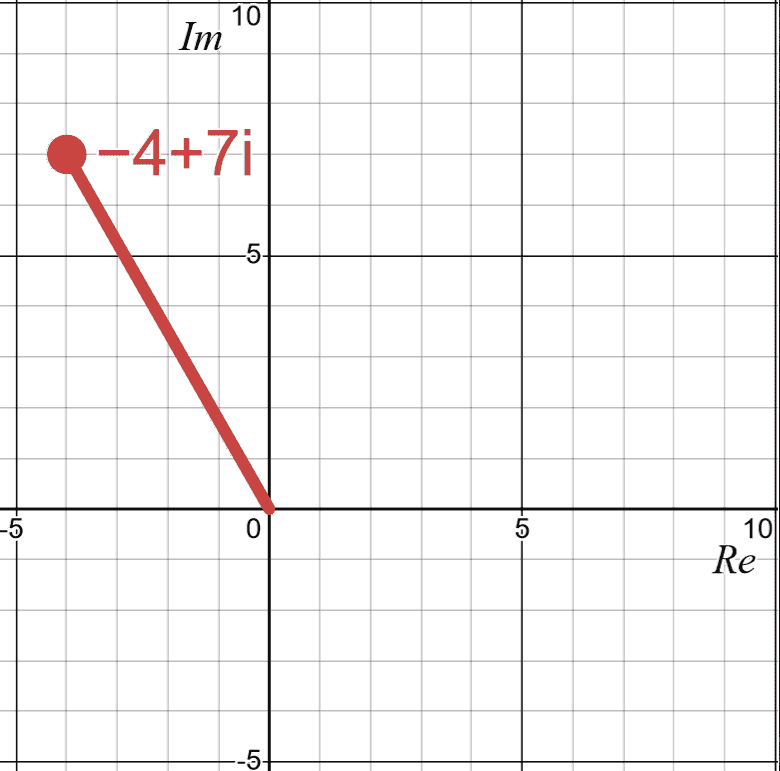
Intuitively, is like the on the -plane. The Argand diagram is very similar to the -plane itself, with real axis perpendicular to the imaginary axis . Each point on the real-imaginary plane represents a single complex number.
Definitions
purely imaginary number is a complex number with no real part, such as .
modulus, or , or , is the distance between a complex number and 0, on the Argand diagram. This applies the distance formula analogous to the magnitude of a vector.
argument, is the counterclockwise (anticlockwise) angle (usually in radians) that the number makes with the real axis. Historically, IB accepted either a range of or . In contrast, may refer to any of the infinite arguments off by radians.

complex conjugate, or , or , is the complex number with the same real part as , but the imaginary part of differ by a negative sign.
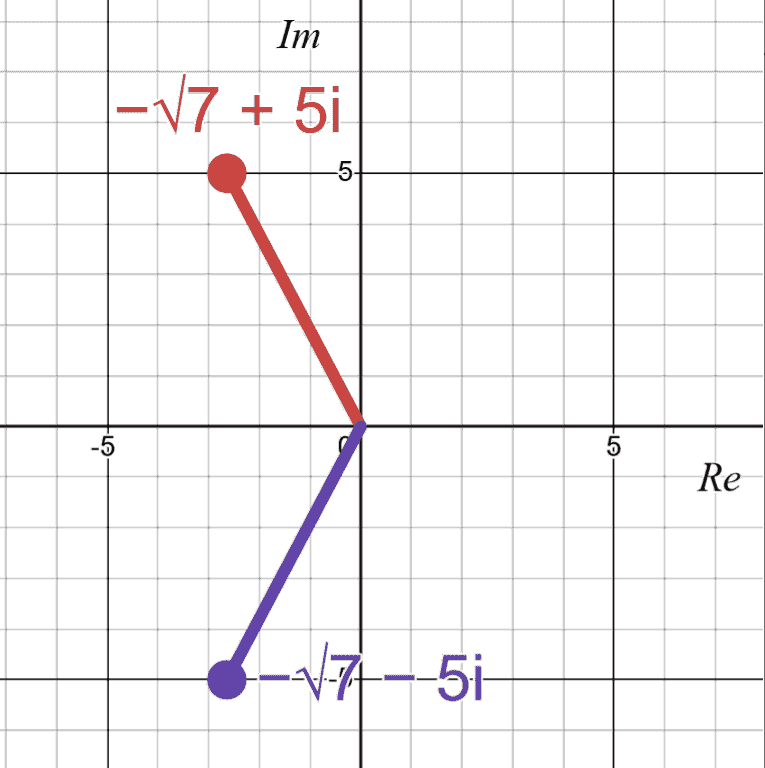
Notations
Rectangular (Cartesian) form
modulus-argument (polar) form or
exponential (Euler) form
In particular the same complex number can have multiple polar/Euler forms, but only one Cartesian form. That is,
For the rest of the page, “polar” refers to both polar and Euler forms.
Converting from to
Converting from to
There is only one modulus
but possibly multiple arguments. The most common range of , though the alternative range has also been used or accepted on exams.
We will look at the four quadrants separately, then summarize at the end. They all involve . The range of is .
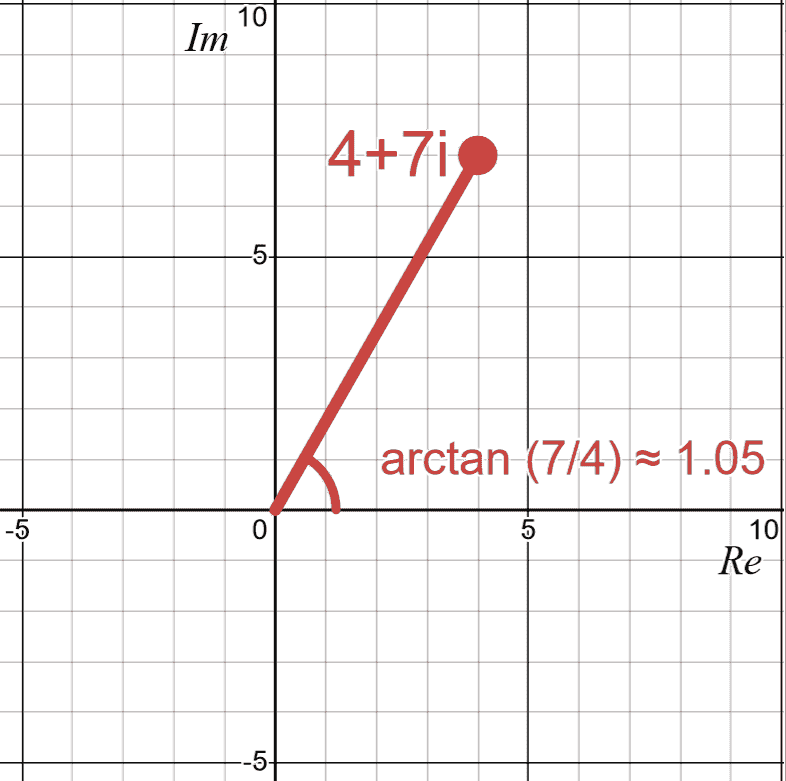

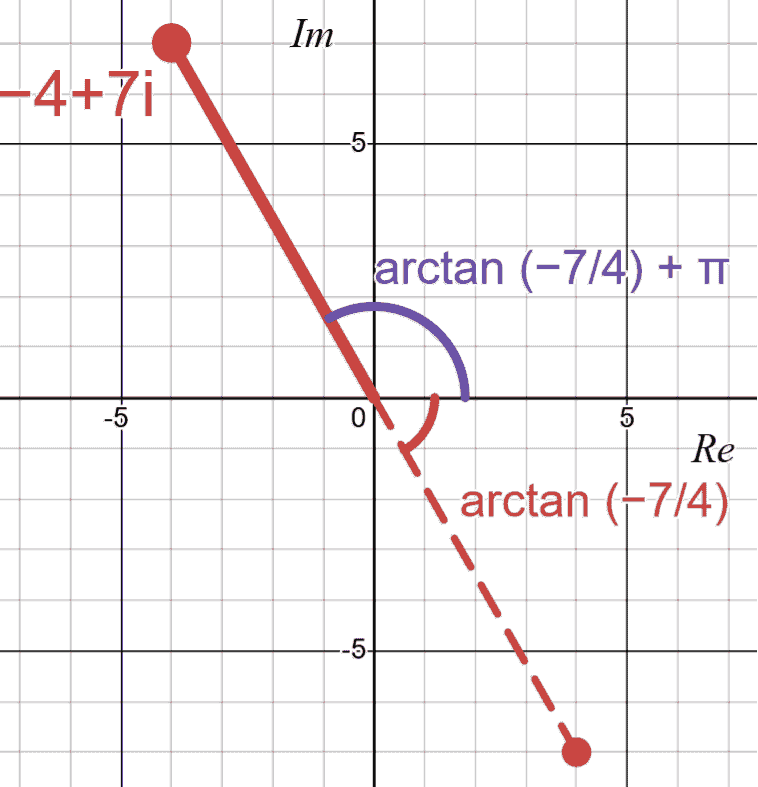
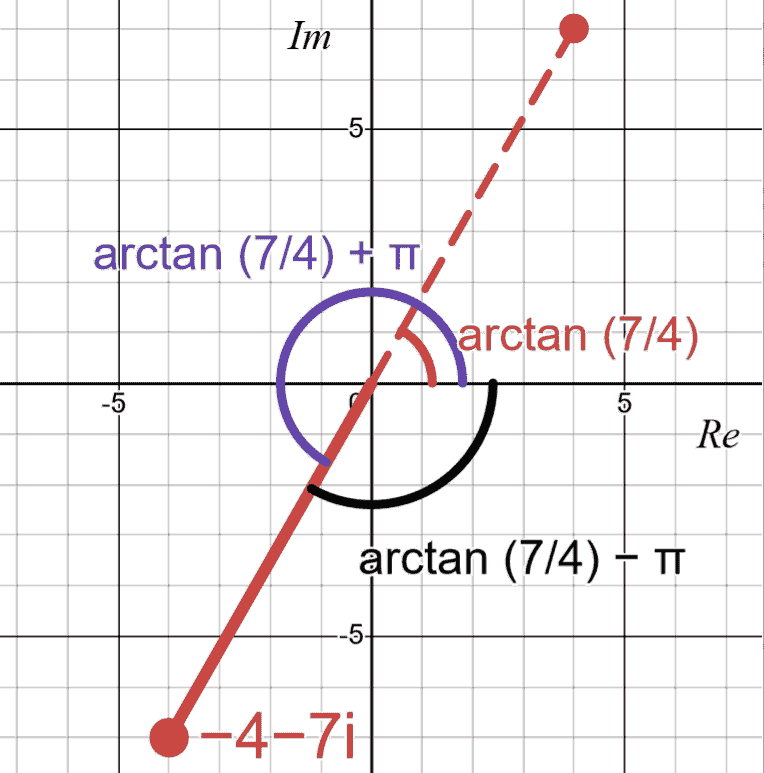
The predominant definition of in involves
This is sometimes known as the function. Some authors define and some leave it undefined. The latter definition is more consistent with complex numbers multiplication and as an indeterminate form.
In certain cases where IB requires the argument to be positive,
which is simply the prevalent definition of but adding whenever it is negative.
Example: Convert to polar form.
The complex number can be written as , so the modulus is times modulus of .
Because , we add radians to the .
which uses , as is an odd function.
The complex number in polar form is
Arithmetics
| operation | rectangular | polar |
|---|---|---|
| addition | ||
| subtraction | ||
| multiplication | ||
| division | ||
| exponentiation |
In summary, addition and subtraction are easier in rectangular form, whereas multiplication, division, and exponentiation are easier in polar form.
Example: Simplify .
Multiply top and bottom by the complex conjugate of the bottom.
Complex number addition and subtraction are analogous to their counterparts in vectors..
Multiplying a complex number by a real number means keeping the argument, but multiplying the modulus by . This is akin to scalar multiplication of vectors.
Multiplying two complex numbers result in a complex number whose modulus is product of the two moduli and argument is sum of the two arguments (perhaps off by radians).
Properties
Most properties of real numbers apply to complex numbers. A notable exception is complex numbers to the power of complex numbers (beyond syllabus). In addition, fractional exponents are allowed (see section below) as long as a particular value is chosen as the principal value.
Example: Evaluate .
From calculator we see , so the real part is positive, and imaginary part is negative.
Note: and other exponential functions have multiple branches when . Here we were using the principal branch.
Important properties are as follows. and are complex numbers. is any integer.
Multiplication of complex numbers:
Properties of complex numbers can be derived from the above extensions of arithmetics into complex numbers.
Properties from rectangular form addition and subtraction include
Properties involving modulus include
Notably, for real numbers, , but for complex numbers is the product between a complex number and its complex conjugate. This means the modulus function for complex numbers is not identical to the absolute value function for real numbers.
Tip: When multiplying or adding a complex number and its complex conjugate, the imaginary parts cancel. The difference is that in addition we get twice the real part, while in multiplication we get square of the modulus.
Properties involving polar form multiplication, division, and exponentiation include
Fractional exponents of complex numbers
Recall
Back in good old days of real numbers, we chose to mean , and not . We can extend the for complex numbers by saying the principal root of with the least positive argument.
For example, the principal value of is , but the real value is . This leads to ambiguity in the mathematical notation.
In general, questions typically will say solve , rather than finding .
The solutions to , using de Moivre’s theorem, are
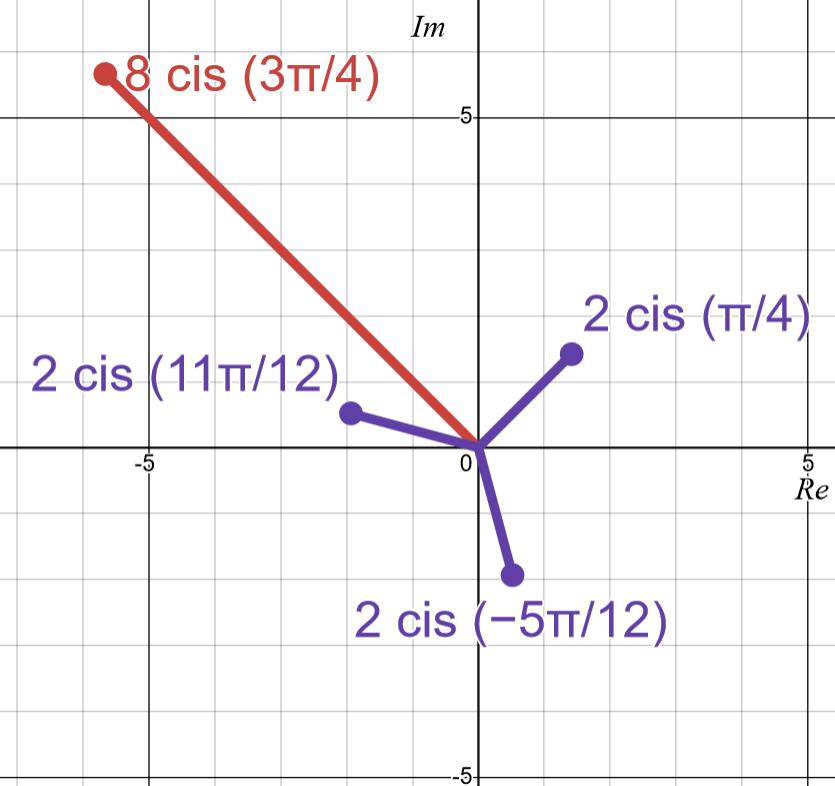
In particular, is always a positive real number, and each solution is apart. So on the Argand diagram, all solutions have the same modulus, and are equally spaced with an angle in between the solutions.
Real polynomials
For a real polynomial, ie a polynomial with only real coefficients, if is a root, then so is .
Fundamental theorem of algebra
See also fundamental theorem of algebra and multiplicity
The fundamental theorem of algebra states that a degree- polynomial has exactly roots, though some of them may be repeated roots.
In particular, depending on the discriminant (), a quadratic has either two different real roots, two repeated real roots, or two roots that are complex conjugates of each other. All three cases can be solved using the quadratic formula.
Note: The fundamental theorem of algebra does not apply if a complex conjugate is involved in the equation itself.
In cases of working with polar form and the fundamental theorem of algebra, remember that there are an infinite number of arguments for each complex root. In other words, the fundamental theorem of algebra does not apply to arguments, rather only to the complex roots themselves.
Complex numbers and trig proofs
Expansion is possible via both binomial theorem and de Moivre’s theorem (in rectangular and polar forms). Questions often involve comparing coefficients using the two expansions.
Typically, this also involves expressing trig functions all in terms of complex numbers, or vice versa.